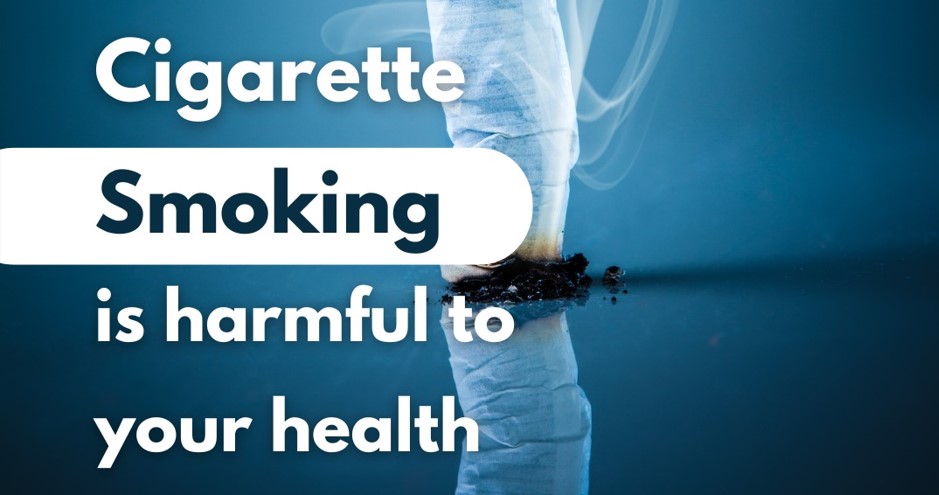How unregulated tobacco products in Kenya are posing serious public health threat

According to The Lancet, more than 300 million people worldwide use smokeless tobacco products.
While many people primarily associate tobacco with cigarettes, the public remains largely unaware of the variety of other tobacco products, some of which are unbranded, that are sold on the streets.
Unbranded tobacco products, especially those consumed by young people, present significant health risks due to their illegal production and the inclusion of unverified harmful substances.
More To Read
- Breast cancer: New study finds genetic risk in African women
- Study shows physical exercise can greatly reduce cancer recurrence
- Substance abuse in Coast region exceed national average - CS Murkomen
- Waking up to addiction: Life’s daily struggle in informal settlements
- Norwegian study shows women with more children have lower cancer risk
- Frequent cannabis busts reveal depth of Kenya’s ongoing war on drugs
These products often contain toxic chemicals, pesticides, and heavy metals.
For example, certain e-cigarettes have been found to contain dangerous chemicals like diacetyl, which can cause severe lung damage.
The lack of regulation and transparency in producing these products leaves consumers unaware of the associated risks, exacerbating the growing public health crisis.
In Kenya, various tobacco products are sold, including some that are unbranded or are illicitly produced. These products are often available in informal markets and street corners, which raises significant public health concerns, especially as many consumers, particularly young people, are unaware of their risks.
Some of the common tobacco products peddled in Kenya include jungle cigarettes, which are an unbranded, illegal tobacco product commonly found in informal markets across Kenya. They are often sold in small packs or individually at a fraction of the price of branded cigarettes, making them appealing to low-income individuals and young people. These cigarettes are produced without proper regulation, and their content is not verified, which makes them especially hazardous to health.
One of the most concerning aspects of jungle cigarettes is that some are even wrapped in newspapers, further highlighting their lack of regulation and the potential for contamination.
Additional harmful chemicals
The use of newspaper as wrapping material introduces additional harmful chemicals into the smoke when the cigarette is lit, such as ink and other toxic substances.
Jungle cigarettes often contain harmful additives, such as toxic chemicals, heavy metals, and pesticides, which are not found in regulated tobacco products.
The lack of quality control can lead to higher levels of tar and nicotine, increasing the risk of lung cancer, respiratory diseases, and cardiovascular problems.
They may also contain higher levels of carbon monoxide, further exacerbating the risk of chronic lung conditions.
Shisha, or hookah, is another popular tobacco product among young people in Kenya, especially in urban areas. The tobacco is often flavoured and smoked through a water pipe. While many people mistakenly believe that the water filters out harmful substances, research shows that shisha smoke contains toxic chemicals and carcinogens.
Shisha smoke contains high levels of carbon monoxide, tar, nicotine, and heavy metals, which can lead to lung cancer, heart disease, and respiratory problems.
Sharing the same mouthpiece increases the risk of infectious diseases like tuberculosis and hepatitis.
The myth that it is safer than cigarettes leads many users to underestimate the risks of shisha.
Another tobacco product popular in Kenya is kuber, a form of smokeless tobacco often chewed or placed inside the mouth. It is frequently consumed by young people and men, particularly in rural areas. Kuber is made from crushed tobacco leaves and mixed with other substances.
Like other smokeless tobacco products, kuber can cause oral cancer, gum disease, and tooth loss due to the high levels of nicotine and carcinogens it contains.
It can also lead to an increased risk of heart disease and high blood pressure, as nicotine causes the blood vessels to constrict.
Unregulated e-cigarettes
E-cigarettes or vapes have become increasingly popular in Kenya, especially among teenagers and young adults. While some are sold legally, many unregulated e-cigarettes are available on the streets, often in unbranded packaging.
E-cigarettes contain harmful chemicals such as formaldehyde and acrolein, which can damage the lungs and lead to respiratory diseases.
Some unregulated e-cigarette liquids contain dangerous chemicals like diacetyl, which is associated with a severe lung disease known as "popcorn lung."
The nicotine in e-cigarettes is highly addictive and can negatively impact brain development in young people, as well as increase the risk of cardiovascular diseases.
Another tobacco product used in Kenya is snuff, a form of smokeless tobacco that is typically inhaled through the nose or placed under the lip. In Kenya, it is sometimes used in rural areas or by older generations.
Snuff increases the risk of oral cancers, and gum disease, and can lead to nicotine addiction.
Like other smokeless tobacco products, snuff can cause tooth loss, bad breath, and irritation to the nasal passages.
Unregulated production makes many of these products harmful, especially the unbranded or street-sold varieties, which are produced without any oversight or regulation. As a result, they may contain unknown and potentially harmful substances, such as pesticides, heavy metals, and chemicals that are banned in regulated products.
Young people are especially vulnerable to these products due to their low awareness levels and low-risk perception. The use of tobacco products like jungle cigarettes or shisha often starts at an early age, leading to long-term health problems like cancer, lung disease, and heart disease.
Lack of consumer knowledge
Since these products are often sold informally, there is little to no consumer education regarding their harmful effects. This lack of knowledge, combined with the addictive nature of tobacco, exacerbates the public health crisis.
A report on Emerging Tobacco Challenges by the National Authority for Campaign Against Drug Abuse (Nacada), has highlighted an emerging challenge through focus group discussions, which indicated that smokeless tobacco products are becoming increasingly popular due to their affordability, easy availability, and accessibility — particularly among underage children.
These products, often unregulated, are being sold widely without adherence to the requirements stipulated by the Tobacco Control Act, 2007. This lack of compliance raises significant concerns regarding the health and safety of consumers, especially minors.
Amend Tobacco Control Act
Given the growing threat posed by smokeless tobacco products and their easy availability to underage individuals, it is recommended that the Ministry of Health, through the Tobacco Control Board, amends the Tobacco Control Act, 2007.
The amendments should provide clear and enforceable provisions that specifically target the regulation and control of smokeless tobacco products.
In the proposed amendments, smokeless tobacco products should be subjected to strict labelling and packaging guidelines to ensure they are clearly identified and consumers are fully informed of the risks associated with their use.
There should also be tightened enforcement of age restrictions for the sale of smokeless tobacco products to prevent minors from accessing these harmful substances.
Strong health warnings should be incorporated on smokeless tobacco products, similar to those required for smoking products, to raise awareness of the severe health risks, including cancer, gum disease, and addiction.
awareness campaigns should be done to educate the public, especially youth, about the dangers of smokeless tobacco products, leveraging both traditional and digital media channels.
Enhanced monitoring and penalties for non-compliant sellers, particularly those targeting minors with smokeless tobacco products, is also recommended.
The World Health Organisation reports that there are approximately 1.25 billion adult tobacco users globally, with over 8 million deaths attributed to tobacco use each year.
A significant portion of these deaths occurs in low- and middle-income countries, which are often targeted by aggressive marketing tactics from the tobacco industry.
According to The Lancet, more than 300 million people worldwide use smokeless tobacco products.
Tobacco use poses serious health risks not only for smokers but also for non-smokers. Exposure to second-hand smoke results in 1.2 million deaths annually.
Alarmingly, nearly half of all children worldwide are exposed to tobacco smoke, leading to 65,000 child deaths each year from diseases related to second-hand smoke exposure.
Top Stories Today












































